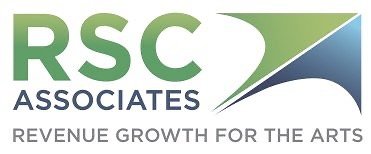THE ART OF THE ASK - PART 2
With Catherine Heitz New
Today, RSC CEO Catherine Heitz New will complete the Art of the Ask roadmap with the final three steps: transitioning into the Ask, making the Ask itself, and the importance of the follow-up. The “Ask” moment can fluster even the most seasoned fundraiser, but with a few simple steps, you can create a conversation that feels natural, authentic, and effective while strengthening your donor relationships
Listen today, and become more confident and prepared for your next donor conversations.
Read the full transcript below or click the button to listen.
FULL TRANSCRIPT OF THE PODCAST
In our last post, we explored the first two steps in the Art of the Ask: How to share meaningful updates and ask engaging questions that build authentic, donor-centered conversations. Today, we’ll complete the roadmap with the final steps: transitioning into the Ask, making the Ask itself, and the importance of the follow-up. This moment can fluster even the most seasoned fundraiser, so we recommend these three steps.
Step 3: Transition with Permission-Based Asking
You’re seeking the green light to move into the giving portion of the conversation. And granting permission puts the donor at ease because they have control over the direction. I like to think of permission-based Asking as the “Yes” before the “Yes.”
It sounds like:
“We are calling on our closest friends to invest in our future. Can we explore your support?”
Most already knew you were meeting to talk about their gift, but this is a gracious way to transition the conversation – and, as a bonus, it puts the donor in a “yes” frame of mind.
If they say no – that’s ok, and ask if you can stay in touch – it’s about building the relationship after all.
Step 4: Making the Ask
When you receive the green light, it’s time to position your donor at the center of the ask.
Focus on their participation and what they can help accomplish:
“Your support will enable the Symphony to expand our education programs.”
Simply: “Join us in bringing this vision to life.”
Use closing questions to frame the Ask:
DIRECT: “The Board and other early supporters have already helped us raise $100,000. Will you join us with a gift of $5,000?”
ANOTHER YES before the YES. “Your support is crucial in moving the organization forward. We’d like to ask you for a leadership gift of $5,000. Is that something you’d consider?”
Personally, I love that phrase – “Is that something you’d consider?” It allows the donor to say yes today, while still taking time to consider the larger Ask.
TAILORED TO THEIR PRIORITIES: “As a long-time patron of our community concert series, we’d like to ask you for a leadership gift of $10,000 to support that programming. To show our appreciation, we could recognize you as a concert sponsor. Is this of interest?”
See that, I closed it with another Yes before the Yes phrase. “Is that of interest?”
Step 5: Follow-Up
Especially for major Asks, donors will need time to consider – so the magic is in the follow up.
But, I don’t want you to get into the game of how long do I wait after the date to call the donor back. Establish what follow-up looks like within the conversation.
Sounds like:
“I know you’ll need time to consider this request. Can I call you in a week to follow up?”
This establishes clear next steps and gives you permission to continue the conversation.
In Closing, remember Steps 3, 4, and 5 in the Art of the Ask:
Use permission-based asking to transition to the solicitation
Position your donor at the center of the Ask
Establish clear follow-up
By following this structure, you create a conversation that feels natural, authentic, and effective while strengthening your donor relationships. We hope you feel more confident and prepared for your next donor conversations.



